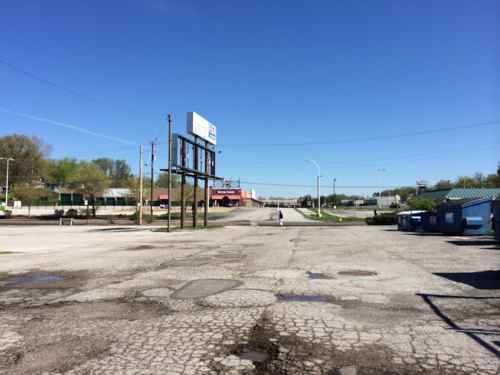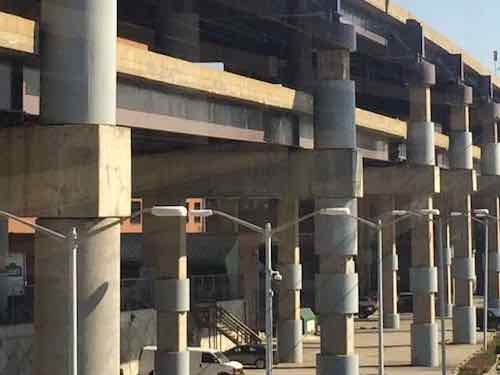Opinion: Municipal Bankruptcy Not The Best Option For St. Louis At Present

For at least a decade I’ve favored consolidating all the governments in St. Louis City & St. Louis County into one: municipalities, school districts, fire districts, water districts, etc. OK, maybe just 2-3 based purely on geography: urban vs rural. My goal has been to improve the region and the lives of everyone living here.
But picking a solution comes later in the process:
1. Define the problem
- Differentiate fact from opinion
- Specify underlying causes
- Consult each faction involved for information
- State the problem specifically
- Identify what standard or expectation is violated
- Determine in which process the problem lies
- Avoid trying to solve the problem without data
2. Generate alternative solutions
- Postpone evaluating alternatives initially
- Include all involved individuals in the generating of alternatives
- Specify alternatives consistent with organizational goals
- Specify short- and long-term alternatives
- Brainstorm on others’ ideas
- Seek alternatives that may solve the problem
3. Evaluate and select an alternative
- Evaluate alternatives relative to a target standard
- Evaluate all alternatives without bias
- Evaluate alternatives relative to established goals
- Evaluate both proven and possible outcomes
- State the selected alternative explicitly
4. Implement and follow up on the solution
- Plan and implement a pilot test of the chosen alternative
- Gather feedback from all affected parties
- Seek acceptance or consensus by all those affected
- Establish ongoing measures and monitoring
- Evaluate long-term results based on final solution
I don’t know that everyone in the region agrees on the problem, or that a problem even exists. Still with Better Together pushing one solution, many are scrambling to find alternative solutions. Recently St. Louis County Councilman Tom Fitch proposed St. Louis follow Detroit’s 2013 example: file bankruptcy.
The Revised Statutes of Missouri (427.100) grant municipalities the power to declare bankruptcy. It’s time for Better Together and the city of St. Louis to look at this option instead of destroying the current county governance system, which is working for most of the region. Only after the city of St. Louis has reorganized its system of local governance and becomes financially viable should there be a discussion about re-entry into St. Louis County as one of its municipalities.
Bankruptcy isn’t a preferred option for any city. However, it is working for Detroit. It can work for St. Louis — without destroying many of the communities in St. Louis County that we are proud to call home. (Post-Dispatch guest column)
Outgoing 24th Ald. Scott Ogilvie wrote an excellent rebuttal. Still, I think many options need to be aired, reviewed.
From a 2011 Pew Charitable Trust article, discussing the risks of a municipal bankruptcy:
A Chapter 9 filing immediately raises the likelihood of a credit rating downgrade and, as a result, higher future borrowing costs for the government. The damage to a municipality’s image may result in an exodus of residents or less business investment, which can hit government tax collections and make the underlying budget crisis worse. Public workers worry about slashed salaries or benefits, and all residents could see higher taxes, loss of services or deferred maintenance on necessities such as schools, roads and bridges — although those consequences can precede bankruptcy, too. Even before Jefferson County [Alabama] declared bankruptcy this month, it had laid off more than 500 employees, closed four satellite courthouses and reduced law enforcement services.
It’s important to note that cities don’t emerge from Chapter 9 debt free. Detroit filed bankruptcy in July 2013, exited in December 2014. Retirees took a big hit.
Detroit ultimately shed $7 billion in debt and was able to restructure another $3 billion and put about $1.7 billion into improvements.
In the end, the bankruptcy proceedings eliminated $7.8 billion in payments to retired workers and the city got off the hook for $4.3 billion in unfunded health-care obligations and future costs.
It could have been far worse. At one point during the bankruptcy journey, the city’s general retirees were threatened with the possibility of seeing their pension checks slashed by up to 34 percent and police and fire retirees were looking at cuts of up to 10 percent.
Police and firefighter pensioners did not see upfront cuts to their pension checks. But they saw their 2.25 percent annual cost-of-living adjustments reduced to about 1 percent. Police and fire also saw cuts relating to health care, and many are struggling with higher premiums under the Affordable Care Act, too. (Detroit Free Press)
As Ald. Ogilvie pointed out, a lot of St. Louis retirees live in St. Louis County and elsewhere in the region. Cutting their benefits would ripple through the region. Funding pension obligations are a big issue all over the country, not just in St. Louis. Pensions are for people, they must be considered.
There has been one government bankruptcy in the region, a levee district in St. Peters filed in 2014.
I don’t think St. Louis is anywhere close to being desperate enough to file Chapter 9. If it did, it would pull much of the region’s reputation down with it.
We need to agree on the problems facing the region and explore all options.




